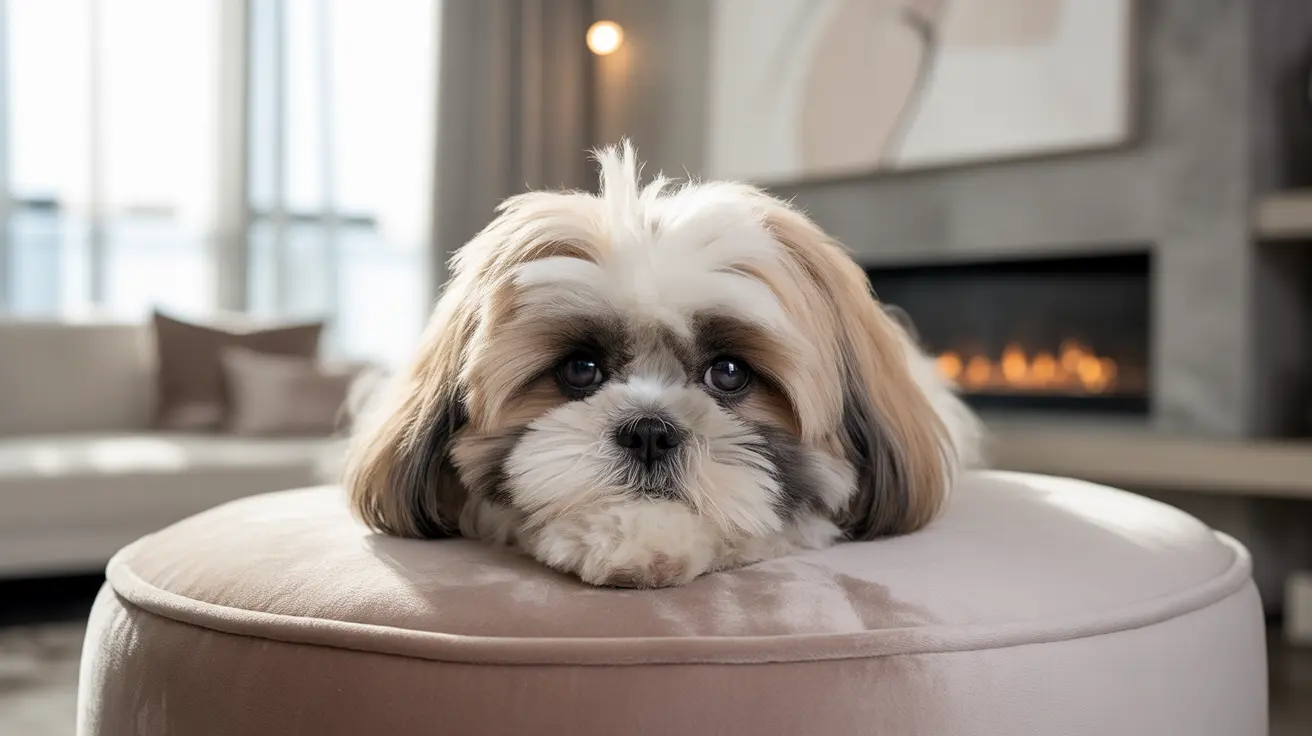The Sacred Origins of the Shih Tzu
The Shih Tzu's breeding history begins in Tibet, where Buddhist monks carefully developed these dogs to resemble miniature lions - sacred symbols in Buddhist culture. The name "Shih Tzu" literally translates to "lion dog" in Mandarin Chinese, reflecting their intended appearance and spiritual significance.
These small dogs were initially bred within Tibetan monasteries, where they served both as companions and as living representations of the Buddhist faith. According to ancient legends, the Buddha himself traveled with a small lion dog that could transform into a full-sized lion for protection.
From Tibetan Temples to Chinese Palaces
During the Tang Dynasty (618-907 AD), Shih Tzus were presented as precious gifts from Tibetan monasteries to Chinese emperors. In China, the breeding program became even more refined and selective, with imperial courts crossing these dogs with Pekingese and Pugs to develop the distinctive features we recognize today.
The Chinese imperial family maintained exclusive ownership rights over Shih Tzus, making them symbols of extreme wealth and status. Palace eunuchs were specially assigned to care for these prized dogs, who lived in luxurious quarters and enjoyed dedicated gardens within the Forbidden City.
The True Purpose: Royal Companionship
Unlike many ancient dog breeds that were developed for specific working roles, Shih Tzus were purposefully bred for one primary function: to be the perfect companion. Their small size, affectionate nature, and adaptability to indoor living made them ideal lap dogs for Chinese royalty.
These dogs were bred to have friendly, outgoing personalities and to thrive on human attention. Their moderate exercise needs and calm demeanor made them perfectly suited for palace life, where their main job was to provide companionship and entertainment to their noble owners.
Cultural and Spiritual Significance
Beyond their role as companions, Shih Tzus carried deep spiritual meaning in both Tibetan and Chinese culture. Their lion-like appearance connected them to Buddhist mythology, where lions represented protection, wisdom, and power. This spiritual significance enhanced their value and contributed to their careful breeding and preservation.
In Chinese art and literature, Shih Tzus frequently appeared as symbols of nobility and divine protection. Their presence in imperial households was believed to bring good fortune and ward off evil spirits.
Modern Legacy of Royal Breeding
Today's Shih Tzus maintain many of the characteristics they were originally bred for, including their distinctive appearance and companion-focused temperament. While they're no longer exclusive to royalty, these dogs continue to excel in their original purpose as devoted family companions.
Modern breeding programs focus on maintaining the breed's friendly disposition, adaptability, and characteristic appearance while addressing health concerns that have emerged over generations of selective breeding.
Frequently Asked Questions
What were Shih Tzus originally bred for in Tibet and China?
Shih Tzus were originally bred in Tibet as companion animals and religious symbols, representing the sacred lion in Buddhist culture. In China, they were refined further as exclusive companion dogs for the imperial family.
How did the Shih Tzu's lion-like appearance influence its role in Buddhist and royal culture?
The breed's lion-like appearance was intentionally developed to represent the sacred lion of Buddhism, making them living symbols of protection and wisdom in both religious and royal settings.
Why were Shih Tzus considered symbols of wealth and status in ancient Chinese imperial courts?
Their exclusive ownership by the imperial family, combined with their elaborate care requirements and spiritual significance, made Shih Tzus powerful status symbols in ancient China.
How did the breeding of Shih Tzus evolve with Pekingese and Pugs to create the modern breed?
Chinese imperial breeders selectively crossed Shih Tzus with Pekingese and Pugs to enhance certain physical characteristics and create the distinctive features of today's breed.
What spiritual or mythical significance did Shih Tzus hold in Tibetan and Chinese history?
Shih Tzus were believed to be living representations of Buddhist lions, carrying spiritual protection powers and serving as physical connections to Buddhist mythology and imperial authority.






